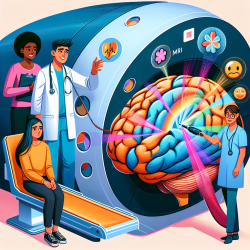Understanding Adolescent Depression Through MRI
As practitioners dedicated to improving the lives of children, staying informed about the latest research is crucial. A recent study titled A magnetic resonance imaging-based morphometric and structural covariance network study of Brazilian adolescents stratified by depression risk offers insights that can enhance our understanding of adolescent depression and potentially refine our therapeutic approaches.
The Study at a Glance
The study explored brain structure differences in Brazilian adolescents categorized by their risk of depression. Using MRI, researchers examined cortical volume (CV), surface area (SA), and cortical thickness (CT) across groups identified as low-risk (LR), high-risk (HR), and currently experiencing depression (MDD). Interestingly, the study found no significant differences in brain structure across these groups, challenging some traditional assumptions about depression's neurobiological markers.
Key Findings
- No significant differences in whole-brain vertex-wise CV, SA, or CT among the risk groups.
- Increased betweenness centrality of the hippocampus in the HR group, suggesting its potential role in emotional regulation and stress response.
- The use of a composite risk score (IDEA-RS) for stratifying depression risk, highlighting the importance of considering multiple sociodemographic factors.
Implications for Practice
While the absence of significant structural differences might seem surprising, it emphasizes the complexity of depression and the need for comprehensive assessment tools. As practitioners, we can take away several lessons:
- Holistic Assessment: Consider using composite risk scores like IDEA-RS to assess depression risk, which integrates multiple sociodemographic factors rather than relying on single indicators.
- Focus on Networks: The study's findings on the hippocampus underscore the importance of understanding brain networks rather than isolated structures. This perspective can guide interventions targeting emotional regulation and stress management.
- Stay Informed: Continually update your knowledge base with current research to refine therapeutic strategies and improve outcomes for children.
Encouragement for Further Research
This study opens the door for further research into the neurobiological underpinnings of adolescent depression. Practitioners are encouraged to engage with ongoing research efforts, contribute to data collection, and apply evidence-based findings in their practice. By doing so, we can collectively advance our understanding and treatment of depression in adolescents.
To read the original research paper, please follow this link: A magnetic resonance imaging-based morphometric and structural covariance network study of Brazilian adolescents stratified by depression risk.










